[…]
Naples Botanical Garden Tackles Water Pollution Through Community Education
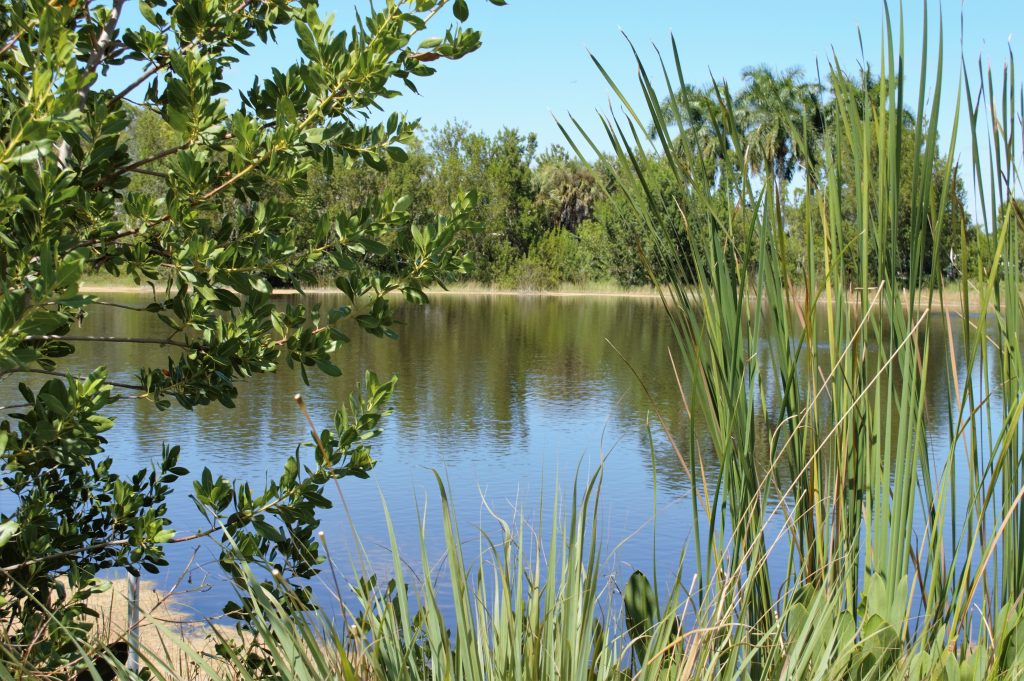

[…]
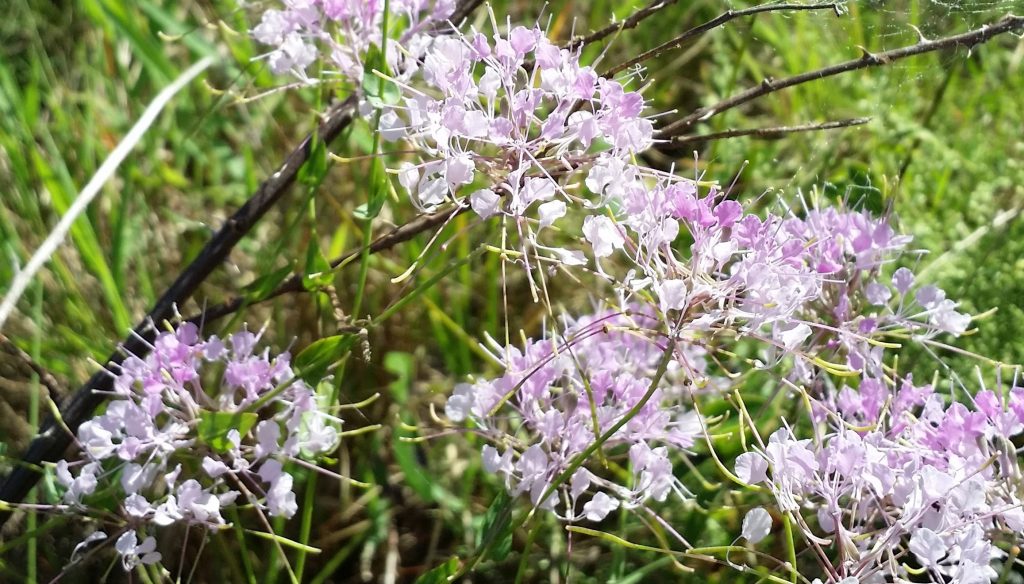
[…]
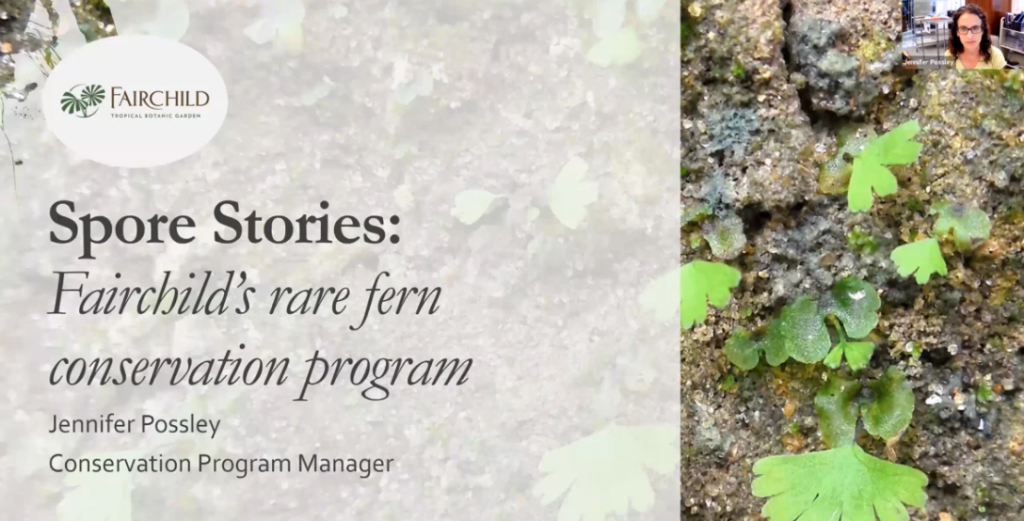
Jennifer Possley, Conservation Program Manager, Fairchild Tropical Botanic Garden South Florida leads the continental US in native fern diversity, with about 60 taxa. Despite this distinction, the region’s ferns have been under-documented and largely ignored by botanists, managers, and regulators. Some of the barriers toward documenting, studying and conserving ferns include difficulties in identification and […]
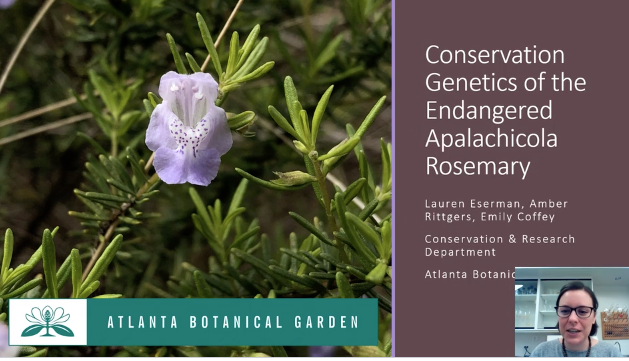
Lauren Eserman, Atlanta Botanical Garden Conradina glabra, or Apalachicola rosemary, is a federally listed endangered species that exists only on a small area of sandhill in Liberty County, Florida. Forestry practices in the last 100 years have resulted in declining populations of C. glabra. In the wild, plants produce very few seeds, but small plants that resemble seedlings […]
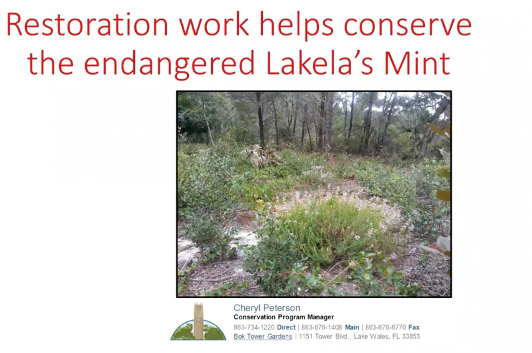
Cheryl Peterson, Bok Tower Gardens Dicerandra immaculata var. immaculata (Lakela’s Mint) (Lamiaceae) is a short-lived perennial endemic to the Atlantic Coastal Ridge. It has only a three-mile historical range and few remaining populations. Population modeling predicts near complete loss of plants within eight years unless habitat is improved enough to support large enough populations to withstand stressful events such […]
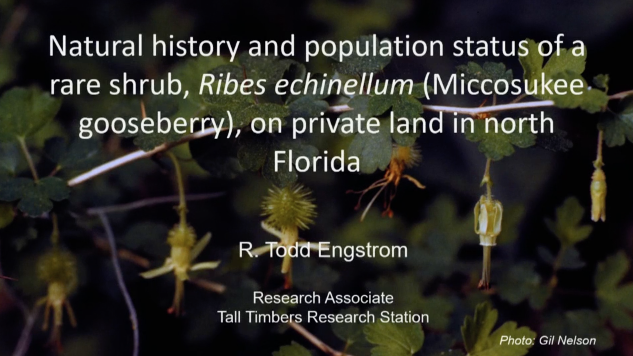
R. Todd Engstrom, Tall Timbers Research Station and Land Conservancy The Miccosukee gooseberry (Ribes echinellum) was discovered in on private land in Jefferson County, Florida, in 1924. A second population was located in McCormick County, South Carolina, in 1957, but this is a study of the Florida population only. The species was classified as federally […]
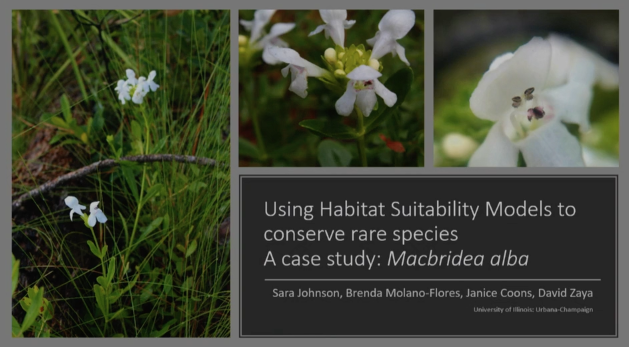
Sara Johnson, Department of Natural Resources and Environmental Science at University of Illinois: UrbanaChampaign Brenda Molano-Flores, Illinois Natural History Survey, University of Illinois: Urbana-Champaign Janice Coons, Eastern Illinois University Many rare and at-risk species exhibit a paucity of research, leaving gaps in the knowledge required to conserve them. Macbridea alba Chapman (White birds-in-a-nest, Lamiaceae) is […]
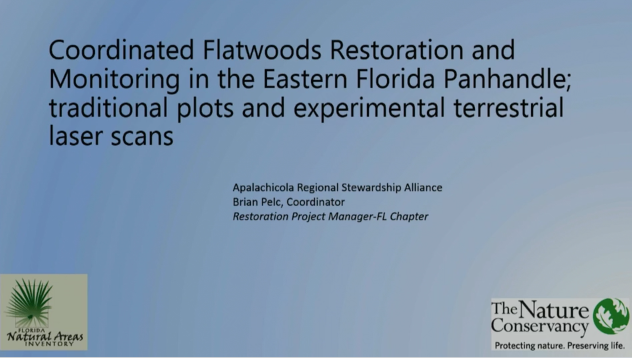
Brian Pelc, Restoration Project Manager, The Nature Conservancy-Florida. Coordinator of the Apalachicola Regional Stewardship Alliance. Chad Anderson, Ecologist, Florida Natural Areas Inventory Wet and Mesic Longleaf Pine Flatwoods (and structurally comparable longleaf ecosystems) play a critical role in maintaining the high biodiversity of southeastern forests. Previous flatwoods work has identified as many as 191 vascular […]
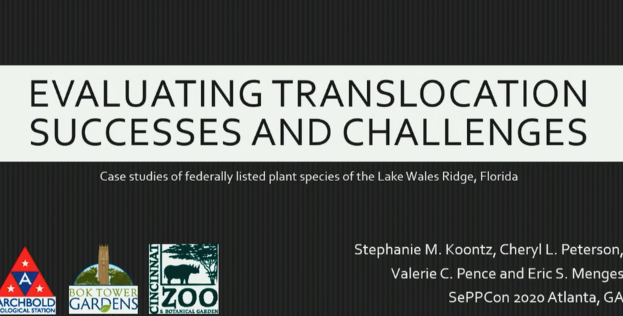
Stephanie Koontz, Archibold Biological Station, Cheryl L. Peterson, Bok Tower Gardens, Valerie C. Pence, Cincinnati Zoo and Botanical Garden, Eric S. Menges, Archbold Biological Station Translocations are an increasingly utilized tool for rare plant conservation. Urbanization along the Lake Wales Ridge, in southcentral Florida, has led to 85% loss of native Florida scrub and sandhill. […]
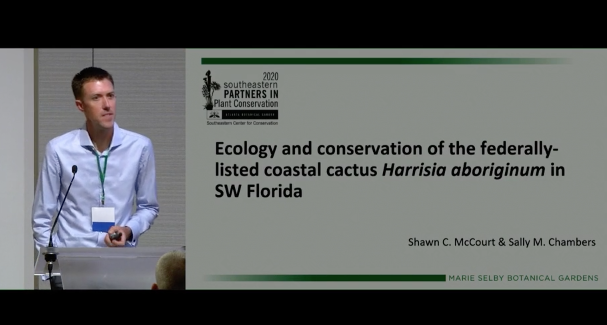
Shawn C. McCourt, Sally M. Chambers, and Bruce K. Holst, Marie Selby Botanical Gardens The genus Harrisia (Cactaceae) comprises 20 narrowly endemic species of night-blooming cacti with two widely separated geographic ranges, including South America south of Amazonia, as well as the West Indies and southern Florida. Commonly known as aboriginal prickly-apple, H. aboriginum is […]
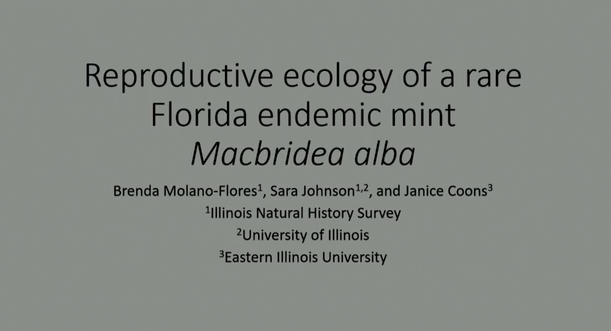
Brenda Molano-Flores, Illinois Natural History Survey, University of Illinois: Urbana-Champaign, Sara Johnson, Department of Natural Resources and Environmental Science at University of Illinois: Urbana-Champaign, & Janice Coons, Eastern Illinois University Macbridea alba (Lamiaceae) is a federally threatened and state endangered perennial herbaceous mint. It is endemic to grassy pine flat woods and occupies a range […]
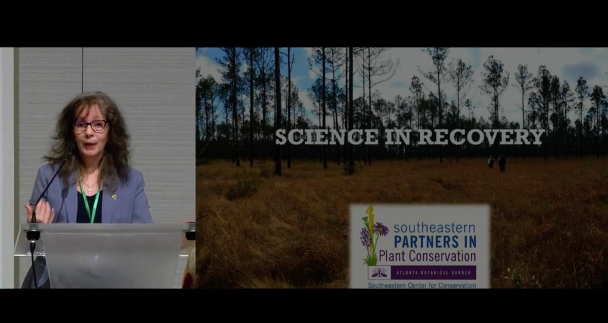
Dr. Vivian Negrón-Ortiz, U.S. Fish & Wildlife Service, Ms. Melanie Kaeser, U.S. Fish and Wildlife Service To protect and manage species listed under the U.S. Endangered Species Act requires the use of the best available science. Field-based studies on topics such as demography, reproductive biology, and seed ecology have provided sound conservation strategies for many […]
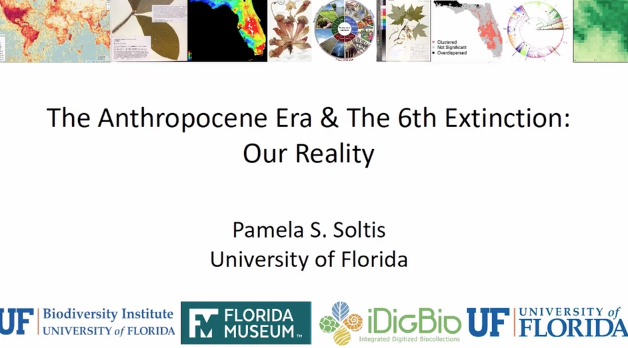
Dr. Pamela S. Soltis, Founding Director of University of Florida Biodiversity Institute, Distinguished Professor and Curator at the Florida Museum of Natural History We are living in a new geological era, termed the Anthropocene, in reference to human impact on our planet. This impact has led to extinction rates that are 1000 times higher than […]
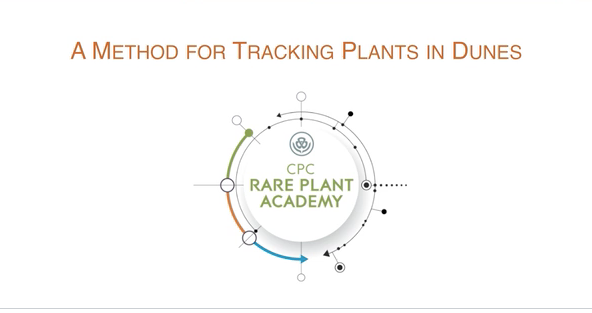
Jennifer Possley, Fairchild Tropical Botanic Garden Since coastal dunes have constantly shifting sands, tracking individual plants over many years can be challenging. Fairchild Tropical Botanic Garden began working with a federally endangered plant called Beach Clustervine in the late 1990s. This long-lived species grows only in the coastal strand area of coastal dune communities in four […]
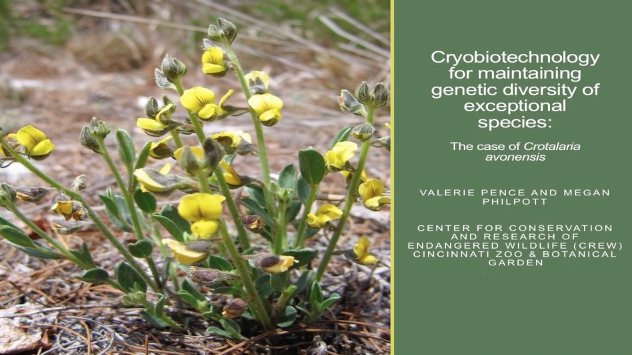
Valerie Pence and Megan Philpott, Cincinnati Zoo & Botanical Garden Crotalaria avonensis is a Florida endemic found in three populations and characterized by low seed production. In the late 1990s, CREW developed protocols for tissue culture propagation from field collected shoot cuttings as well as cryopreservation methods. In order to develop a genetically representative collection […]
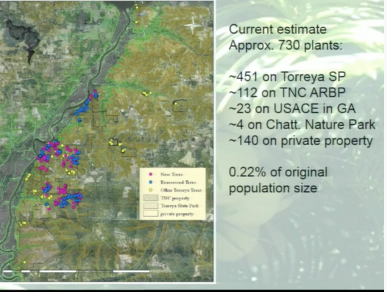
Emily E. D. Coffey, Ph.D., Atlanta Botanical Garden Torreya taxifolia, known as the Florida Torreya, is one of the rarest conifers in the world. Once found as a canopy tree, Torreya is an evergreen dioecious tree endemic to a narrow range of bluffs and ravines adjacent to the Apalachicola River in northwest Florida and extreme […]
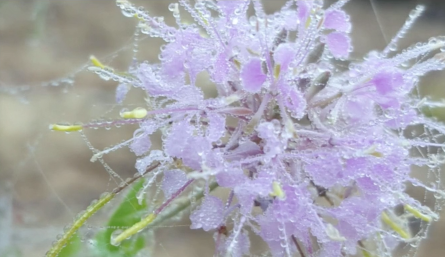
Philip Gonsiska, Whitney Costner, Cheryl Peterson, Bok Tower Gardens Warea amplexifolia (Clasping Warea) (Brassicaceae) is an annual endemic to sandhill habitat in the northern third of the Lake Wales Ridge in central Florida. It typically germinates between February and early May and flowers from August through October. The main threats to W. amplexifolia are development […]
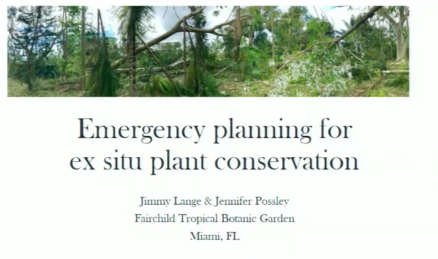
James Lange and Jennifer Possley, Fairchild Tropical Botanic Garden In the event of a hurricane, low elevation and proximity to the coast place Fairchild at high risk, and thus contingency plans must be in place to preserve our ex situ collections. Anticipating severe damage and extended power loss from Hurricane Irma, we took several measures […]